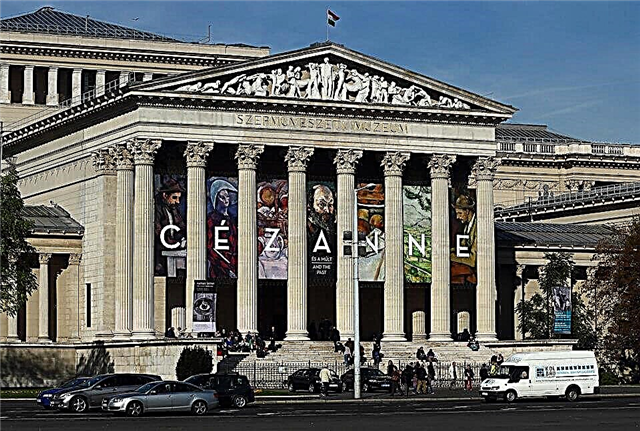In the heart of old Europe, on the banks of the full-flowing Danube, lies a city with a thousand faces. The towns of Pest and Buda, which formed the capital of Hungary in 1873, have seen the legionnaires of the Roman Empire, the Huns, and the Turkish Askers in their lifetime. The ancient history and multinational culture of Budapest are introduced to the museums of Budapest - world-famous galleries and unusual surprise exhibitions, the exhibits of which will surely interest both adults and young tourists.
Hungarian National Museum
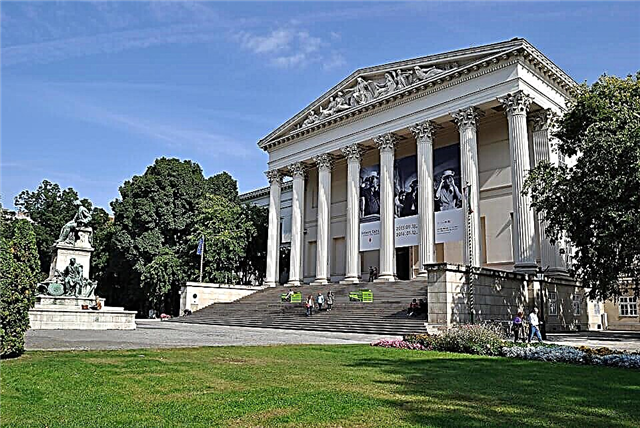
The history of one of the largest museums in Hungary dates back to 1802. The reformer and tycoon Ferenc Szecny, who decided to make his rich collection of historical artifacts available to the public, petitioned the emperor. 45 years later, a few hundred meters from the Danube, on the side of the old Pest, a classicist building appeared, which in itself is a cultural heritage. Its structure is rectangular, the facade is decorated with columns and an antique portico, and the internal stairs are decorated with statues of Raphael Monti.
In total, it offers 7 permanent exhibitions for viewing. On the basement level, you will find the Roman Lapidarium, which displays fragments of tombs, frescoes and sculptures from the Roman Empire. On the floor above, exhibits reflecting the centuries-old history of Hungary await visitors. The most valuable of them are the 1,000-year-old coronation mantle of Byzantine silk, decorated with the image of Jesus Christ surrounded by the apostles, and the golden crown of St. Stephen, covered with sapphires and pearls.
Múzeum körút, 14
Hungarian Museum of Natural History

The exposition is a pantry covered with dust for centuries, storing information about the development of flora and fauna of our planet. Its history dates back to 1802, when Ferenc Szechenyi, the count and collector of rare things, donated a private collection of books and coins to the public. After 9 years, the exhibition was supplemented by paleontological treasures that belonged to the Austrian Archduke Joseph Reiner. The number of relics was constantly growing. By 1848, the collection amounted to 48,000 items, and by the end of the 19th century it had increased to 1 million items.
Today, objects on display in the building of the Accademia Louis will attract the attention of both adults and young tourists. The entire exposition is divided into several zones: mineralogy, zoology, botany, paleontology and anthropology. Most of all, young visitors will like the section where the fossils of the extinct giants of the ancient world are demonstrated: dinosaurs, mammoths and saber-toothed tigers. Here, a full-length model of a caveman invariably gathers spectators.
Ludovika tér 2-6
Ethnographical museum
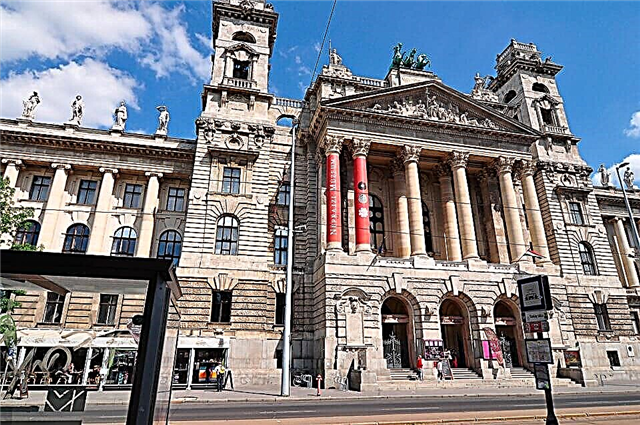
Has a collection of over 200,000 artifacts. Located opposite the Parliament of Budapest, it is one of the largest ethnographic museums in Europe. His permanent exhibitions are located in the building that previously served as the Palace of Justice. The building, built at the end of the 19th century and combining the Baroque, Neoclassical and Renaissance styles, captivates with its solemn facade design and luxurious interiors.
Examination of the exhibits will take at least two hours. The main collection focuses on the development of the Hungarian people from primitive times to the present day. It is divided into several topics: peasantry, hunting, customs, crafts, national music, animal husbandry. Among the exhibits are household items, jewelry, clothing, children's toys, furniture, icons, kitchen utensils and a huge archive of historical photographs. Several rooms are dedicated to the culture and art of Australia, Oceania, African countries and Eurasia.
Kossuth Lajos tér 12
Houdini House Museum

This is the meeting place for fans of the magical art of illusionism. It is located in the mysterious Fortress Quarter, one hundred meters from the Royal Palace. The idea of creating an exhibition dedicated to the life and work of the great magician Harry Houdini (née Eric Weiss) belonged to the actor David Merlini. Entering the territory is not easy. It is necessary not only to buy an entrance ticket, but also to decipher the mysterious message prepared for each guest.
The expositions are based on items that belonged to the famous illusionist: books, personal belongings, unique props for performances and letters. Here you will find a vat filled with water, police handcuffs, the public release from which made the magician famous, and a copy of the "China Torture Chamber", and old posters of popular performances. Every 30 minutes in the small theater-style hall, interactive magic shows are organized by aspiring magicians.
Dísz tér 11
Hungarian Railway History Park

In 1999, an unusual museum appeared in the northern depot of the Hungarian railway line. Its collection is located in the open air, and all the exhibits (even the old executive limousine "The Seagull") are put on the rails. There are no ultra-modern trains here - the objects on display served in the 19th-20th centuries. Among the rarities you will find a steam engine, built in 1870, and a dining car of the famous Orient Express, which has been carrying passengers from Paris to Constantinople since 1883.
Here you can not only get acquainted with retired transport and learn the history of its full work of life. This is an entertainment center that will surely interest little travelers. The park offers its curious guests a ride on a manual railcar or a miniature steam locomotive, “work” as a dispatcher on an interactive railway, study the internal structure of a locomotive and pull all the levers in the cabin of a century-old train.
Tamai ut. 95
Hungarian National Gallery
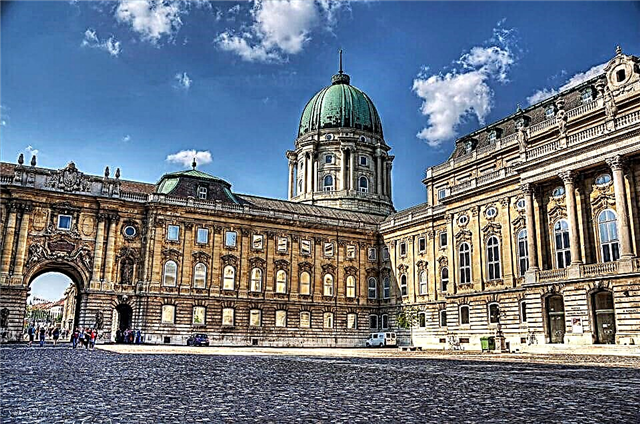
The Hungarian National Gallery, located in the premises of the Royal Palace, was founded in 1957. The collection of about 10,000 objects is organized in chronological order and dates back to the 12th century - the time of the dominance of the Gothic and Medieval styles. You will find creations by the authors of these eras on the first floor. There are also works of art of the late Renaissance and Baroque, created by masters of Hungary and Austria.
The highlight is the 19th century sculptures and paintings. Among them are world masterpieces such as The Women of Cheb by the novelist Bertalan Szekei, The Siege of Buda by Gyula Bentsura and The Last Day of the Condemned Man by Mihai Munkacci. The second and third floors of the National Gallery showcase an extensive collection of 20th century Hungarian painting and sculpture, divided into pre-war and post-war sections, represented by the movements of Expressionism, Surrealism, Pop Art and Hyperrealism. Also, temporary exhibitions are regularly held here, acquainting visitors with the canvases of famous artists.
Szent György tér 2
Museum of applied arts

Opened in 1896. It is located in an unusual building, which is a real architectural masterpiece. The building, erected in accordance with the plans of two famous architects of that time - Gyula Partosh and Eden Lechner - stands out as a bright spot among the buildings around it. Hungarian, Indian and Turkish murals decorate the grandiose palace, the cladding of which was made at the Pécs Zsolnay porcelain factory. The distinctive roof with a central dome is tiled with bright green tiles. Visitors are greeted by an imposing Moorish-style lobby with an embossed patterned ceiling.
Focuses the attention of its guests on objects of European applied art, created in the period from the Middle Ages to the present. The expositions are divided into five sections: furniture, ceramics, jewelry, textiles and glass.The pearl of the collection is the jewels of the influential Esterhazy family, antique clocks, unique musical instruments and oriental tapestries.
Üllői út 33-37
Hungarian Jewish Museum and Archives

On the site of the house in which the ascetic of the emergence of the Jewish state and politician Theodor Herzl was born, today there is a museum, opened in 1931. Its exhibitions introduce the history and culture of the Jewish people and include ceremonial paraphernalia, books, furniture and household items. Most of the collection is occupied by an exhibition covering the history of the Holocaust. Tourists can visit the cemetery where the victims of Nazism are buried, and the Memorial Park, created in honor of the Swedish diplomat Raoul Wallenberg, who saved thousands of Hungarian Jews during the war. Nearby is Europe's largest synagogue, built in 1859.
The funds were formed largely at the expense of personal donations from residents and guests of the city who are not indifferent to his fate. Thanks to their generosity, the archives are constantly replenished with objects of Judaica, letters, photographs, paintings by Jewish authors, and personal belongings. All donated relics are used for organizing exhibitions and conducting research work.
Dohány u. 2
Aquincum Museum

The capital of the Roman province of Pannonia - Aquincum - is considered the first settlement on the territory of modern Budapest. Traces of ancient architecture were found by chance. At the end of the 18th century, a local resident, Istvan Schonwiener, while equipping a basement in his house, came across the remains of a wastewater treatment system that dates back to centuries. Organized excavations began in 1881, and 13 years later a museum dedicated to the ancient city appeared.
Aquinicum is a whole archaeological park, occupying about ⅓ of the ancient Roman city that has gone into oblivion. Walking along the alleys, tourists can come across fragments of an aqueduct, ruins of amphitheaters, ancient temples, baths, residential buildings and the remains of fortress walls. The museum building, whose spacious rooms are decorated in neoclassical style, displays coins, statues, sarcophagi, gladiatorial weapons and household items. Particularly rare are the reconstructed water organ from the 3rd century and the mosaic floors depicting Diana and Hercules.
Szentendrei út 135
House of Terror
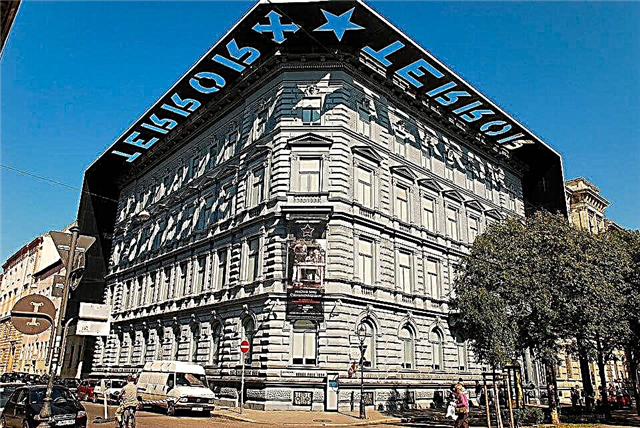
It's no secret that many European countries of the former socialist camp prefer to present the era of "strong friendship" with the USSR as a terrible time marked by the dictates of their "big brother". Hungary was no exception. In 2002, a museum was opened in the capital, the expositions of which are dedicated to the time when the fascist and then the communist regime dominated the country. The gray building, introducing tourists to the nightmares of years of terror, was built in 1880. Since 1937, it served as the headquarters of the Nazi Arrow Crossed Party, and in the post-war period it housed the State Security Administration.
Today, the word TERROR is carved on the cornice of the gloomy structure, casting a huge shadow on the facade in sunny weather. Inside there are instruments of torture, paraphernalia, posters, documents and photographs that recreate the atmosphere of the 1937-1956 repression. The creepiest exhibits are in the basement of the House of Terror. Here, visitors can see the cell-cells and torture rooms where the freedom fighters of Hungary who committed crimes against Nazism and later the Soviet regime were kept.
Andrássy út 60
Museum of military history

The history of the wars waged by Hungary for centuries can be studied within the walls of the former barracks of the Buda Fortress, which in 1918 was converted into a museum of military history. The three-story inconspicuous building houses about 30,000 artifacts, and in the courtyard there are cannons and a Maxim machine gun. We go inside - and find ourselves in the twilight halls, demonstrating not only relics (weapons, insignia, uniforms, banners, first aid kits, archival documentation), but also large-scale exhibitions.
Here you will find a small aircraft suspended from the ceiling, models of military vehicles, trenches with figures of soldiers, and a recreated interior of a living room that survived the 1945 bombing. The boys will be delighted with the opportunity to hold a Degtyarev machine gun and a PPSh machine gun in their hands. Travel tip: Before visiting the exhibition, familiarize yourself with the main milestones in Hungarian history - this will make it easier for you to perceive objects dedicated to military events.
Kapisztrán tér 2-4
Museum "Hospital in the Rock"
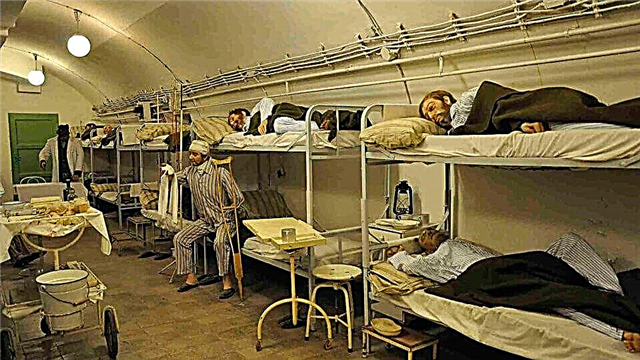
While walking through the Fortress Quarter, you will encounter many popular sights of the city, known to millions of tourists, on your way. But few people know about the unusual place hidden in the catacombs of Buda Castle. Here, in the intricate web of labyrinths, tunnels and basements, the length of which is 10 km, in 1939 an air raid shelter was equipped. In 1944, a hospital appeared on its territory, occupying an area of 2,300 m2.
In 1956, the hospital received the wounded during the anti-Soviet revolution, and after 4 years the premises were classified and converted into a bunker designed to protect against chemical or nuclear attacks. After the end of the Cold War, theatrical performances were held in the "underworld", and a museum has been operating since 2008. Its expositions are scenes from the life of the hospital restored, featuring wax figures of doctors, nurses and patients. In separate rooms there are medicines, medicines, gas masks and equipment from the middle of the 20th century.
Lovas út 4
Exhibition Hall "Mucharnok"
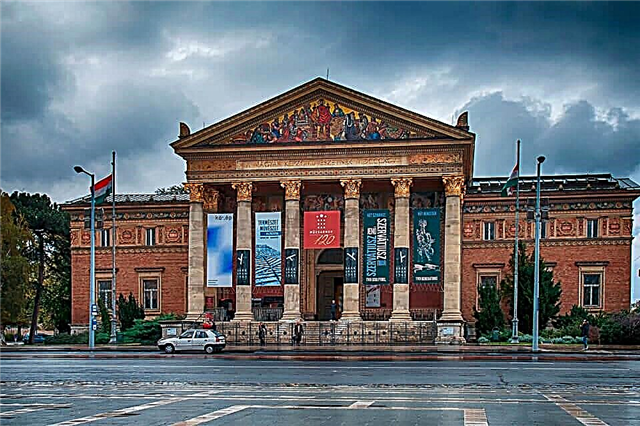
While in Heroes' Square, it is impossible not to pay attention to the neoclassical building with Corinthian columns, the pediment of which is decorated with multi-colored mosaics. Inside is the largest exhibition center for fine arts in the country, which does not have its own permanent collection. Works by contemporary artists are exhibited in the premises of the Mucharnok Hall with an area of 2,300 m². In a special room with a capacity of 80 people, you can watch a three-dimensional film about the natural, architectural and historical sights of Hungary.
Temporary exhibitions held at Mucharnok reflect the creativity of authors working in the styles of modernism, avant-garde, Cézanne, futurism, surrealism, pop art and tachism. It has repeatedly exhibited frescoes by Akila Janos, minimalist wood figures by Zsolt Jossey, amazing photographs of the American Alex Webb, and compositions created by the Hungarian sculptor Chervatius, which cause bewilderment for an unprepared viewer.
Dózsa György út 37
Art Museum

Opposite the Mucharnok exhibition hall, there is another temple of art, presenting a precious collection to the audience. It is based on 700 works collected over the decades by members of the Esterhazy princely family. Today the gallery, opened in 1906 by the Austrian Emperor and Hungarian King Franz Joseph, consists of several sections. The Egyptian part impresses with mysterious mummies, steles and artifacts found in the territory of ancient Thebes. The Antique Department is based on marble statues and precious jewelry.
The graphic department includes sketches and sketches by renowned authors, including Rubens, Rembrandt, Leonardo da Vinci and Chagall. The highlight is the Gallery of Old Masters. More than 2,500 paintings by European painters working between the 13th and 18th centuries are exhibited here: Lucas Cranach, Albrecht Durer, Hans Holben, Raphael, Titian, Francisco Goya and Paul Gauguin.
Dózsa György út 41
Palace of miracles

This unusual place is a must-visit if you come on vacation with children. The Palace of Wonders is a huge interactive center that invites growing researchers to take an amazing journey into a world of fascinating scientific experiments.Having fun playing, young tourists will comprehend the basics of physics, chemistry, mathematics and make amazing discoveries. The most incredible experiments are carried out here: the guys can fearlessly lie on a board studded with nails, find themselves in the place of a human embryo, turn into a giant and a gnome, and solve all the riddles offered by special quest rooms.
The organizers did not forget about the smallest guests. Simple puzzles, pictures, toys, installations with sound and visual effects and numerous levers that can be pulled and pulled are prepared for them. Kids enthusiastically visit the electromagnetic shooting gallery and an interactive music room.
Nagytétényi út 37-43
Museum of the History of Budapest
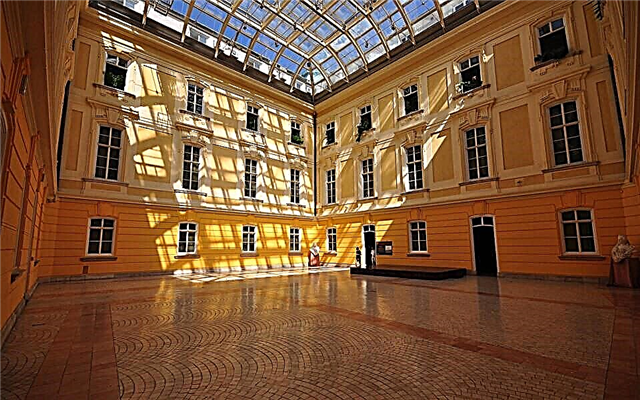
Located in the E wing of the Royal Palace. Tells about the history of the capital of Hungary - from ancient times to the present day. The halls dedicated to the primitive and ancient eras focus the audience's attention on the materials of archaeological research: household utensils, handicrafts, stone tombstones, statues, ancient coins, textiles and weapons. The upper floors display artifacts illustrating a new history - from the era of Roman rule to modern times. Works of local painters are displayed in a separate room.
In 1974, excavations in the northern courtyard of the castle revealed to the world 40 fragments of sculptures created during the reign of Emperor Sigismund. Today, unique relics are stored in the mezzanine and, along with the recreated ruins of a medieval fortress and Renaissance palace, a chapel from 1380 and a Gothic royal chambers crowned with a cross vault, are among the most important exhibits in the museum.
Szent György tér 2
Kishzelli Museum

The collections are exhibited in a Baroque building, built in 1758 as a monastery of the Trinitarian Order. At the beginning of the 20th century, the dilapidated building underwent a large-scale restoration, after which its new owner, manufacturer and avid collector Mixa Schmidt, organized an exhibition of personal rare furniture in it. 4 years after the end of World War II, according to the will of the owner, the house began to belong to the city. Schmidt's work was continued - in the former monastery, bright exhibition halls were equipped, which today are part of the Historical Museum.
Engravings, antique pharmaceutical supplies, printing presses, pieces of furniture and clockwork - this is what awaits visitors. On the ground floor there is an art gallery, which gives an opportunity to get acquainted with the works of Hungarian painters of the 20th century. It also hosts temporary exhibitions dedicated to the world's contemporary art. The courtyard and the adjacent church are intended for concerts.
Kiscelli utca, 108
Ludwig Museum

The building on the banks of the Danube, with its laconic forms, differs from the pompous buildings of old Pest, contains a collection of works by authors who worked in the styles of art-pop, surrealism, expressionism and tachism. Founder - Peter Ludwig - German philanthropist and owner of a collection of paintings created in the period from ancient times to the 20th century. In this gallery, fans of classical art will feel uncomfortable - what is only a stuffed pig displayed at the entrance, watching how the process of its murder and subsequent transformation into a model is shown on a huge monitor around the clock.
Inside the columned building are collections of works by Hungarian, American, Italian, Russian and French artists of the 20th century, located on three floors. Authors include Picasso, Claes Oldenburg, Kazimir Malevich, Tom Wesselman, Wassily Kandinsky, Simon Hantai, Andy Warhol, Sergei Shutov and J. A. Cavellini.
Komor Marcell utca 1
Marzipan museum
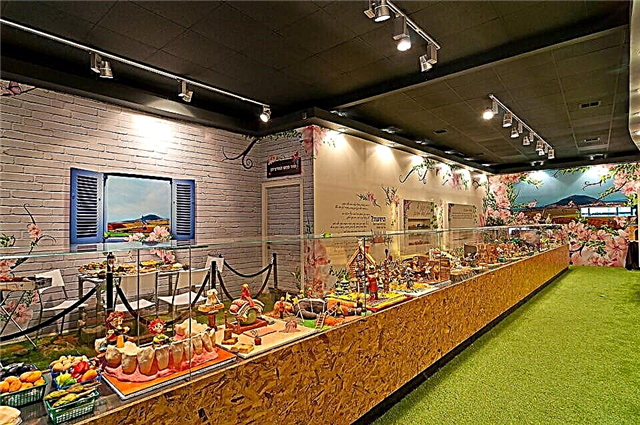
Szentendre is a small romantic town located 15 km north of Budapest. In Hungary it is fondly called the "Pearl of the Danube". One of the main attractions - the world's only marzipan museum - is located on a narrow street among baroque churches and picturesque houses. A paradise for a sweet tooth was created in 1994 by the culinary expert Karoi Szabo, who set himself the task of bringing the history of Europe to the viewer using 5,000 kg of marzipan. Here edible busts of Count Széchenyi, to whom Budapest owes its chain bridge, and Lajos Kossuth, the father of the Hungarian revolution, coexist.
The pride of the creator is a sweet canvas measuring 1.40 x 1.20 m depicting the mistress of Austria and Queen of Hungary Maria Theresa, surrounded by her eleven children. Nearby are fairytale heroes, models of famous buildings, figurines of movie and pop stars. Once a week, the workshop hosts public displays of the modeling and restoration of sweet sculptures. An equally important part is the pastry shop, which offers not only marzipan sweets, but also salami, fine Hungarian wines and liqueurs, and delicious ice cream in the summer months.
Szentendre, Dumtsa Jenő u. 12
Agricultural Museum

Located in the mysterious medieval castle Vaidahunyad, which combines all existing styles of architecture and meets visitors with a wrought-iron Gothic gate. The building, dedicated to the 1000th anniversary of Hungary, was erected in 1896 as a cardboard historical pavilion and was dismantled after the end of the festivities. His stone twin appeared in 1908. The expositions introduce simple scenes from peasant life that are nonetheless entertaining for kids. Many of the exhibits can be touched and even tasted.
There are 8 permanent exhibitions on an area of 5,200 m2. The halls showcase ancient and modern devices for cultivating the land, traditional stoves, peasant clothes, hunting and fishing trophies, herbariums and animal models. The staff can organize themed game activities for younger guests. Adult excursionists will surely pay tribute to the wine section, which introduces the history of the technology and production of the drink and provides those who wish with the opportunity to taste.
Vajdahunyadvár











